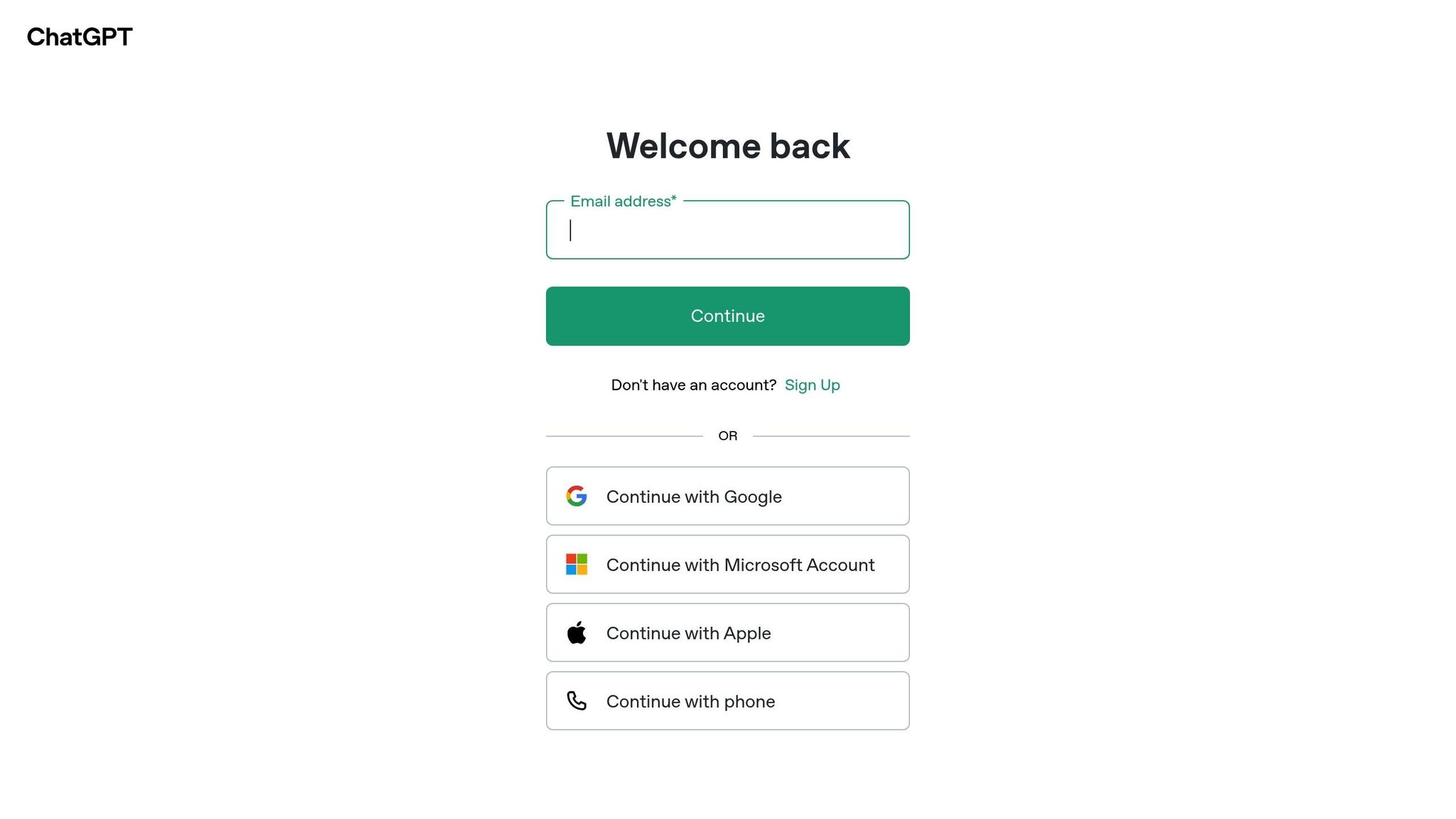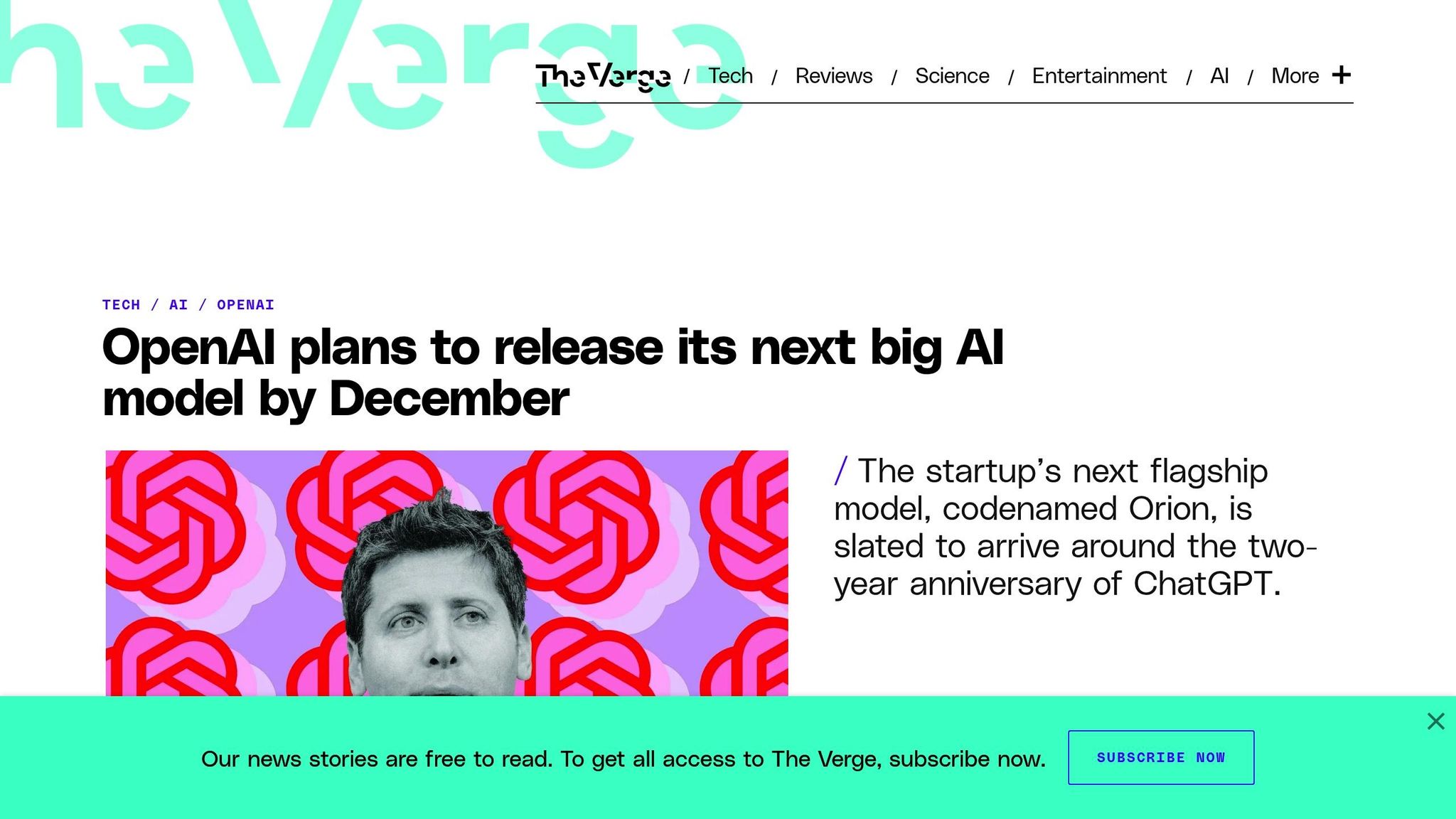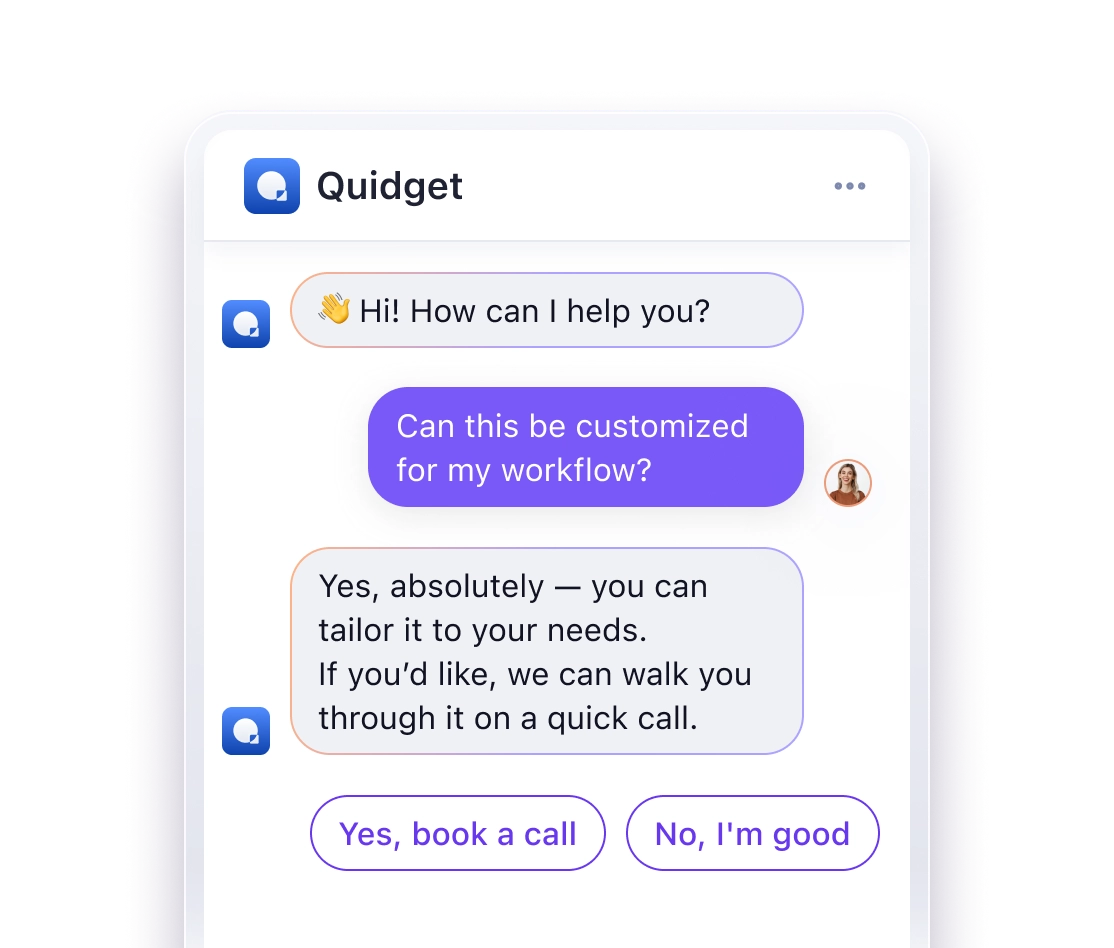ChatGPT 5 is expected to launch between late 2024 and early 2025, based on OpenAI‘s release patterns and ongoing development updates. This new version promises to improve accuracy, expand multimodal capabilities (text, image, and video processing), and enhance business applications like customer service and sales automation. Key features include:
- Improved Accuracy: Reduced errors and better logical reasoning.
- Multimodal Support: Seamless integration of text, images, and videos.
- Expanded Context Window: Longer conversations with better memory.
- Customizable Models: Tailored for specific industries and real-time updates.
Quick Overview of ChatGPT 5 vs GPT-4:

| Feature | GPT-4 | GPT-5 (Expected) |
|---|---|---|
| Context Window | Limited | Expanded |
| Multimodal Support | Text-focused | Full multimedia |
| Training Data | Static | Continuously updated |
| Customization | Basic templates | Advanced fine-tuning |
ChatGPT 5 is designed to help businesses streamline operations, improve customer interactions, and support decision-making with advanced AI capabilities. Prepare by organizing data, integrating systems, and training teams for AI workflows.
ChatGPT 5 and Project Orion: Official Updates from OpenAI

ChatGPT 5 Release Timeline
OpenAI hasn’t officially announced a release date for ChatGPT 5, but its past release trends and recent updates provide clues about the potential timeline.
Past GPT Release Dates
OpenAI’s history reveals a steady evolution in the timing of its GPT model launches:
| Model Version | Release Date | Time Gap |
|---|---|---|
| GPT-1 | June 2018 | Initial Release |
| GPT-2 | February 2019 | 8 months |
| GPT-3 | June 2020 | 16 months |
| GPT-3.5 (ChatGPT) | November 2022 | 29 months |
| GPT-4 | March 2023 | 4 months |
On average, OpenAI has taken 18-24 months between major numbered releases, such as GPT-3 to GPT-4. Based on this pattern, experts anticipate ChatGPT 5 could be released between late 2024 and early 2025.
Current Market Signals
Recent comments from OpenAI leadership offer more context:
- CEO Sam Altman has emphasized the need for extensive testing before GPT-5’s release.
- OpenAI confirmed that GPT-5 is actively in development.
Several factors are likely influencing the timeline:
- Beta Testing: Enterprise clients are reportedly testing early GPT-5 prototypes, which suggests the model is in advanced stages of development.
- Technical Challenges: The complexity of the model and the focus on safety mean OpenAI is prioritizing thorough testing over speed.
- Market Competition: Competitors like Google’s Gemini are raising the stakes, but OpenAI appears committed to releasing a refined product rather than rushing to market.
Considering these factors, along with historical patterns, analysts believe the most probable release window for ChatGPT 5 is between Q4 2024 and Q1 2025. This timeline reflects OpenAI’s focus on balancing innovation with safety and reliability for enterprise-grade AI systems.
Expected Technical Features
Building on OpenAI’s cautious release strategy, ChatGPT 5 aims to address persistent challenges in business AI with targeted technical upgrades.
Improved Accuracy
The latest model brings noticeable enhancements in accuracy, thanks to updated AI architectures. One key improvement is the expected decrease in "hallucinations" – cases where the AI produces incorrect or misleading information.
Refined training methods also boost logical reasoning, making the AI better at tackling multi-step problems. With improved context retention, ChatGPT 5 can handle longer, more coherent conversations, making it more effective at addressing complex customer complaints and operational challenges.
Text, Image, and Video Processing
ChatGPT 5 introduces advanced multimodal capabilities, allowing it to process and integrate text, images, and video content seamlessly. This marks a major step up from its predecessor.
Business Data Training
The new architecture supports continuous learning, enabling the model to adapt to real-time business updates. This feature allows industry-specific versions of ChatGPT 5 to stay aligned with market trends. This capability is particularly useful for tasks like customer sentiment analysis and informed decision-making, as discussed earlier.
GPT-4 vs GPT-5 Features
ChatGPT 5 introduces several key advancements over GPT-4:
| Feature | GPT-4 | GPT-5 (Expected) |
|---|---|---|
| Context Window | Limited | Expanded |
| Training Data | Static | Continuously updated |
| Customization | Basic templates | Advanced fine-tuning |
| Multimodal Support | Primarily text | Fully integrated multimedia |
The upgraded model also includes stronger ethical safeguards and computational efficiency, along with expanded customization options tailored for business needs.
Business Use Cases
ChatGPT 5 offers new ways for businesses to streamline operations and boost growth, thanks to its advanced features.
Customer Service Tools
ChatGPT 5 takes customer service to the next level. According to global retailers testing its prototypes, it can handle routine inquiries without needing human assistance. Its ability to understand context and provide multilingual support lets businesses expand their customer service reach with ease.
These improvements also pave the way for smarter sales automation.
Sales Process Automation
Businesses that have started using ChatGPT 5 report impressive results:
| Sales Metric | Results |
|---|---|
| Automated Initial Sales Interactions | 70% |
| Increase in Qualified Leads | 50% |
| Reduction in Sales Cycle Time | 25% |
These outcomes are made possible by ChatGPT 5’s ability to analyze customer data, identify promising leads, and tailor communications on a large scale.
But it’s not just customer-facing tasks that see a transformation. ChatGPT 5 also brings major efficiency to internal operations.
Internal Process Automation
In back-office settings, ChatGPT 5 has been shown to:
- Speed up report creation
- Improve data accuracy
- Deliver measurable productivity improvements
Business Task Comparison
The technical advancements of ChatGPT 5 are reflected in its performance compared to ChatGPT-4:
| Business Function | ChatGPT-4 | ChatGPT-5 |
|---|---|---|
| Handling Complex Queries | Base performance | 40% faster resolution |
| Response Precision | Standard | 25% better accuracy |
| Memory for Context | Limited | Extended conversation memory |
| Language Support | Basic | Advanced API connectivity |
sbb-itb-58cc2bf
Implementation Steps
To make the most of ChatGPT 5’s advanced reasoning and multimodal features (covered in Expected Technical Features), a well-thought-out approach is essential. Here’s how businesses can get started:
Data Organization
Preparing your data is a key step for successful AI deployment. Here’s what to do:
- Review and clean your data: Identify and fix any inconsistencies or errors in your datasets.
- Categorize by sensitivity or purpose: Organize data based on its relevance to specific use cases.
- Centralize access: Ensure data is accessible from a unified location to streamline workflows.
Software Integration
Connecting ChatGPT 5 with existing systems is crucial for maximizing its potential. Focus on these steps:
- API Setup: Use modern integration tools to establish secure API connections that allow seamless communication between systems.
- Testing Environments: Create testing setups that replicate real-world conditions to evaluate functionality and performance before full deployment.
AI and Human Workflows
For AI to complement human efforts effectively, tasks should be clearly divided between the two:
| Task Type | AI Responsibility | Human Responsibility |
|---|---|---|
| Complex Issues | Initial triage | Problem resolution |
| Customer Escalations | Automated routing | Personalized handling |
Implementing tiered support systems can help AI manage routine tasks, while human teams focus on solving intricate problems and building customer relationships. Regular feedback loops between human staff and AI systems ensure ongoing accuracy and performance improvements. This approach ties directly to ChatGPT 5’s ability to streamline customer service operations.
Safety and Compliance
ChatGPT 5 offers exciting possibilities for improving operations (see Implementation Steps), but safety must be a top priority. Addressing safety measures ensures dependable and trustworthy interactions, especially in customer service and sales automation.
Error Prevention
Preventing errors is key to maintaining both accuracy and reliability. To achieve this, businesses should consider:
- Input validation to filter out inappropriate or irrelevant queries
- Content moderation to ensure responses meet standards
- Human oversight for critical tasks and decisions
- Confidence scoring to flag uncertain outputs
These steps help catch mistakes early without slowing down operations. For high-stakes decisions, human review remains essential.
Data Protection Rules
For companies managing sensitive customer information, addressing data privacy concerns is non-negotiable. With 73% of businesses highlighting data privacy as their main AI-related concern, organizations should focus on:
- Encrypting data during processing
- Conducting regular Data Protection Impact Assessments (DPIAs)
- Establishing clear policies for data retention
Adhering to GDPR and CCPA regulations is crucial for maintaining trust and avoiding legal risks.
AI Response Quality
Maintaining consistent, high-quality responses requires ongoing monitoring, especially since 60% of enterprises struggle to explain AI decision-making processes. To address this, businesses should:
- Monitor accuracy by setting measurable targets for response quality and user satisfaction
- Detect bias through regular algorithm audits and diverse training datasets
- Track performance by establishing clear metrics for accuracy and satisfaction, then refining systems based on the results
Conclusion
With ChatGPT 5’s technical features and safety measures already outlined, businesses should focus on three key areas to prepare for its anticipated late 2024 to early 2025 release. This release is set to offer powerful tools that could transform how companies function.
The introduction of multimodal features offers opportunities for operational upgrades. To get ready, organizations should focus on:
- Preparing infrastructure for AI integration: Assess and update your tech systems to handle advanced AI functionalities effectively.
- Prioritizing use cases tied to core operations: Pinpoint areas where ChatGPT 5 can provide the most impact, like automating customer service. Create phased implementation plans based on proven results.
- Training employees for AI workflows: Equip teams to work alongside AI, establish clear escalation protocols, and set up feedback loops to refine processes while ensuring human oversight for critical decisions.
FAQs
How much better will ChatGPT 5 be?
ChatGPT 5 is expected to bring notable advancements, building on the technical upgrades of GPT-4 and addressing key business challenges.
Analysts estimate it will achieve 20-30% higher accuracy compared to GPT-4, excelling in multilingual business scenarios.
Some of the key areas of improvement include:
Language Processing
- Enhanced understanding of industry-specific contexts
Multimodal Capabilities
- Integrated text, image, and video analysis for richer, more context-aware interactions
These enhancements are expected to strengthen its role in customer service and sales automation, as highlighted in the Business Use Cases section.



